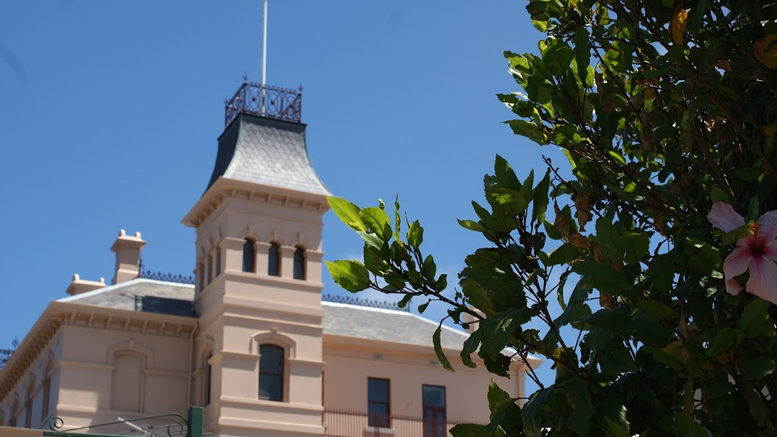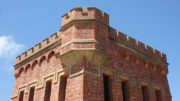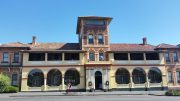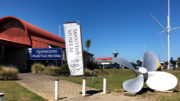The Wathawurung People have had lived in the Queenscliff well before the Europeans came to the area. Escaped convict William Buckley was the first white man to live in the area. He befriended the local aboriginals and lived with them in the area for 32 years from 1803. George Tobin in 1883 was one of the first people to utilise the area, operating a pilot service in the area then called Whale Head, but now Shortland’s bluff where the lighthouse now stands. Several other operators started up operations similar to Tobins in the following years.

There has been a long standing myth or legend (which we hope is true) that Queenscliff has hidden treasure. The story is told that Pirate Benito Benita buried a huge bounty of treasure in a cave on the cliffs of Swan Bay in 1798. There are tales of him being caught burring the treasure by the then British Navy and the cave was sealed with exploding gunpowder. Benita was then hanged and the treasure was never recovered. Other the year many people have searched for the mythical treasures, which were meant to include some religious artifacts from a Peru Cathedral- the strange thing though, these items are still in the church, and there is no evidence of the British capturing and executing Benita- so there is every chance the story is just a long fetched tale- but who knows it might be true and the shores of Swan Bay may one day reveal the bounty to a lucky searcher.
The first lighthouse was erected in the early 1840’s and a survey of the bay was carried out also around this time. By the 1850’s a pastoral run was set up around where the town now stands, this land was sold off after a survey once the Victorian Gold Rush started and the town started to grow, it was then called Queenscliff in honour of the then reigning monarch Queen Victoria by Governor Charles La Trobe. Schools, churches and other town amenities soon followed.
The town became a popular shipping port, with a lifeboat service, pilot service large jetty and pier. By the 1860’s a tramway was installed and the pier extended to be able to handle larger vessels. Fishermen then moved in with their fleet and the gold rush brought an influx of migrants seeking their fortune. The town soon after developed its garrison, and became a strategic defence post during the Crimean War. By the 1880’s the fort was in place with scares of a Russian invasion.
1879 saw the opening of the railway line connecting Geelong, this line is no longer used by commercial trains and is now one of the Bellarine’s most popular tourist attractions with travel between Drysdale and Queenscliff. The rail brought huge growth to the area, not only were goods easily transported in and out of Queenscliff, the trains along with the many paddle steamers were an ideal way for holiday makers from Melbourne including the high society to holiday in Queenscliff. The magnificent Victorian hotels and guest houses soon popped up to cater for the demand. Some say that Queenscliff lost its appeal in the early 1900’s due to the introduction of the motor car. For the first time people with their own car had a choice of where they wanted to visit, and went searching near and far for somewhere different to holiday. This slowed Queenscliff’s huge growth and has probably been responsible for saving much of its Victorian heritage with many stately buildings being saved from people wanting to tear them down and replace them with newer more modern structures.
The best way to explore Queenscliff is on foot, there are many magnificent buildings to see and visit. The Queenscliff Hotel on Gellibrand Street dates back to 1888 and still retains its old world charm. Recently renovated keeping the beautiful heritage features in mind the hotel has beautiful lace work and even a enclosed tower. The old Lathamstowe Hotel dates back to 1881-83 and was ran by Edward Latham, who certainly knew a thing or two about beer, he was a brewer who founded the Carlton Brewery. Latham married the daughter of the owner of the Ozone Hotel which was then called Baileau House. The Ozone was one of the more fashionable houses in Queenscliff and was a holiday destination for the rich. The Ozone took the name of a paddle steamer called the Ozone which was used to bring people to Queenscliff from Melbourne. The paddle steamer was sunk off the coast of Indented heads at the end of its life to form a breakwater and still today it can be seen off the shore at low tide.

Another unique thing to see in Queenscliff is the Black Lighthouse which is part of the garrison, it is the only one of its kind in Australia and the stones were cut and numbered in Scotland and shipped to Australia back in 1863 a truly incredible feat.




